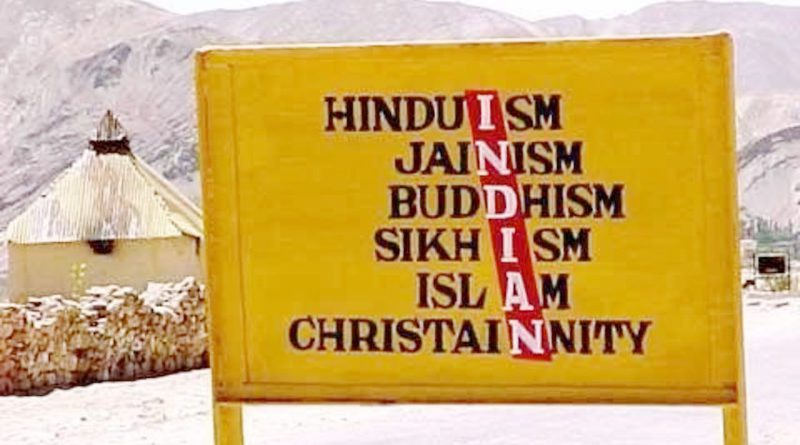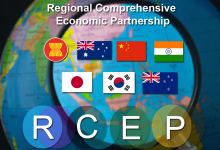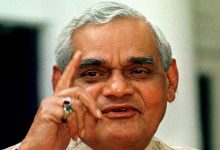If secularisation has to precede development, then both religion and ‘God’ must go. Knock off God, there wouldn’t be religion and division. Knock off religion, God will go off the podium/pedestal and, without religions to reckon with, the State will not be able to take sides. A report for Different Truths.
Studies and reports supported with empirical and other data can be interpreted in whichever way ideologues want. Give the interpretations a meaning and slant that mirrors theirs. Data-driven IndiaSpend, in the opposite ideological camp to that of the party currently ruling at the Centre, has put out an analysis of a study done by British researchers to place India’s secularism in stark bad light.
The study ‘Religious Change Preceded Economic Change in the 20th Century’ says secularism precedes economic development. Secularisation is separation of State from religion. Religion by definition traps human beings into compartments with neither reason nor logic. And ‘God’ is the imagination of the fevered mind. Born out of fear of the unknown.
If ‘seeing is believing’, god doesn’t exist. Some mortals claimed God spoke to them. But there were no audio recording to prove the claims. People took them for their word and religions were born. If there is logic and reason in religious texts, they came from man. All reference to ‘God’ must come with the caution/caveat – “Subject to proof.”
If secularisation has to precede development, then both religion and ‘God’ must go. Knock off God, there wouldn’t be religion and division. Knock off religion, God will go off the podium/pedestal and, without religions to reckon with, the State will not be able to take sides.
The British study used data from the World Values Survey, “which mapped people’s changing values and beliefs to estimate the importance of religion in the 20th (1900-2000) Century.” It ranked 109 nations. India stood 66. China placed first. United States 57. Pakistan 99. Bangladesh 104, Ghana last.
“If India discards religious beliefs that perpetuate caste and gender inequalities, it could more than double its per capita gross domestic product (GDP) growth of the last 60 years in half the time,” says the IndiaSpend analysis of the study. It quotes Damian Ruck, co-author of the study, that “This increase (India’s per capita GDP per annum grew 26 times between 1958 and 2018) could have been higher if Indians were less rigid in their religious views.”
“What are the dominant religious beliefs that could be holding back India’s growth from reaching its maximum potential?” The question asked, IndiaSpend concluded that “these relate to the two most vulnerable social groups in India — women and marginalised castes.”
So far, so good. It is true women and marginalised castes “are allowed to play (only) a limited role in India’s economy” and the proportion of scheduled-caste individuals in the lowest wealth bracket was close to thrice that in other castes – “26.6% as against 9.7%”, as per figures culled from the National Family Health Survey 2015-16 (NFHS-4) and put out by IndiaSpend.
It’s also true that social and cultural factors restrict Indian women from working outside their homes. India’s female workforce participation is amongst the lowest in South Asia. Ruck’s study says India’s per capita GDP per annum should be higher than it actually is, “around Rs 457,015 ($6,500) per person.” Ruck concluded that “something else is holding back the Indian economy.”
Ruck has data to support that “India would still stand to benefit considerably from increased levels of secularization… If India were to reach secularization levels seen in Western Europe (like Germany, which was ranked 6th of 109 nations).”
But while Ruck can be forgiven for losing the woods for the tree, considering that he is a “foreigner”, IndiaSpend should have gone about its analysis in a more intellectually honest manner. The State stepping back from religions will not end caste equations nor remove gender inequalities. But it will definitely put religion and religious nuts out on the margins.
What is secularism? Who are secular, should be secular? Who has to be secular come what may? The answer to the last question is “the State has to be secular come what may.” The reason for that is in the answer to the first question – the definition of secularism. The second question is about all those who insist that followers of the majority religion should be ‘secular’ but that those of the minority religions have no such obligation.
IndiaSpend, while keeping to its enviable track record of sticking to the straight and narrow, ‘data-driven’ analysis, should have broadened its horizons for this one analysis. It should have given primacy to the second question and given an honest answer/analysis.
There are no two views that caste and marginalised sections of Indian society are the products of an obscurantist aspect/facet of the Hindu “religion” and that Islam and Christianity are “casteless”; and that Hinduism – as a religion, which it is not – would do considerable good for India if it rids itself of these two blots.
But to bundle one religion with caste divisions (which puts Hinduism on the mat compared to Islam and Christianity) and gender inequalities is committing a foul. Communal clashes, cow vigilantism, caste oppression, triple-talaq, not to speak of nikah halala, all require State intervention. But wouldn’t that intervention breach the concept of secularism?
Ruck may, in fact, think it’s possible to put an end to all these aberrations in one go, with laws. But for IndiaSpend to believe! Caste-divisions and marginalisation of women cannot disappear in a jiffy. Despite all the sound and fury, there is churning happening and literacy and education taken to their limits will deliver, in time.
Don’t forget, the subcontinent for the most part of history – running into thousands of years – was the most developed region on the globe. The sobriquet ‘Sone Ki Chidiya’ for the land mass called ‘Hindustan’ did not spring out of thin air. It is only in the last 75 or so years that an attempt has been made to organise Hinduism, give it the ‘religion status.’ Secularism was always the Hindu’s credo.
If anything, post-independence minority appeasement is what subverted secularism. Appeasement based on religion is not written in the Constitution of India. Unlike Pakistan, which is an Islamic republic. Why are Pakistan and Bangladesh 90 times worse than India? Why is China 100% “secular”?
IndiaSpend did not ask these questions. It should have. China with its authoritarian streak has shown Islam its place. India with her flawed secularism refused to. Caste and gender-inequality are albatross but India’s per capita GDP will rise only if India gets its definition of secularism right.
Sushil Kutty
©IPA Service
Photo from the Internet





 By
By

